Some of the links in this post may be affiliate links.
Do you have an orchid with wrinkled leaves and you’re wondering what the cause is and how you can fix it? Wrinkled orchid leaves are typically caused by ONE common cause, and I will help to guide you to troubleshoot your particular case. And if the wrinkling hasn’t gone too far, you can even revive your orchid with a little time and patience!
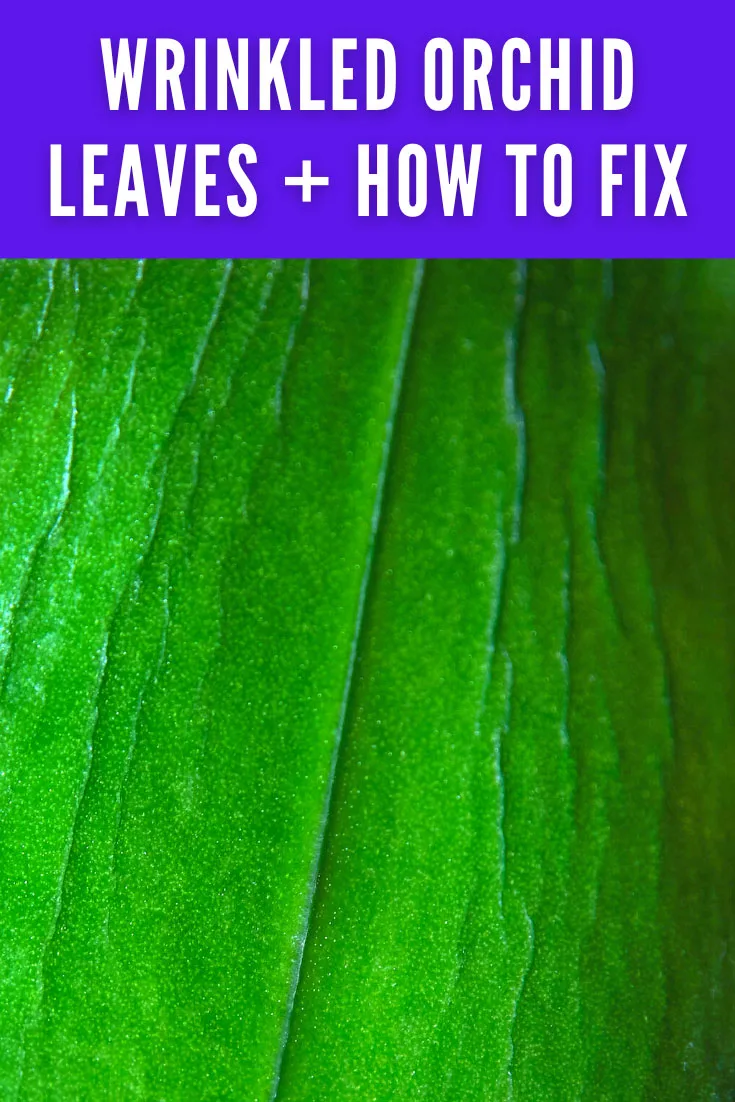
Table of Contents
WHY ARE THE LEAVES ON MY ORCHID WRINKLED?
In the vast majority of cases, wrinkled orchid leaves are caused one ONE thing: a lack of water to the leaves which can be caused by either underwatering and ironically, it is also caused by “overwatering” and subsequent root rot.
How can this be? Allow me to explain the two very different cases to help you determine your particular cause of your wrinkled orchid leaves, as well as how to fix it.
So is it underwatering or “overwatering”? First let’s take a look at what wrinkled orchid leaves versus healthy orchid leaf look like.
As you can see below, wrinkled orchid leaves have pronounced ridges or wrinkles throughout the leaf, and the leaf may even droop and feel a little floppy. In fact, before it starts to wrinkle, the orchid leaves will usually start to droop first. If you continue to leave your plant too dry, it will also start to wrinkle and then start to turn yellow.
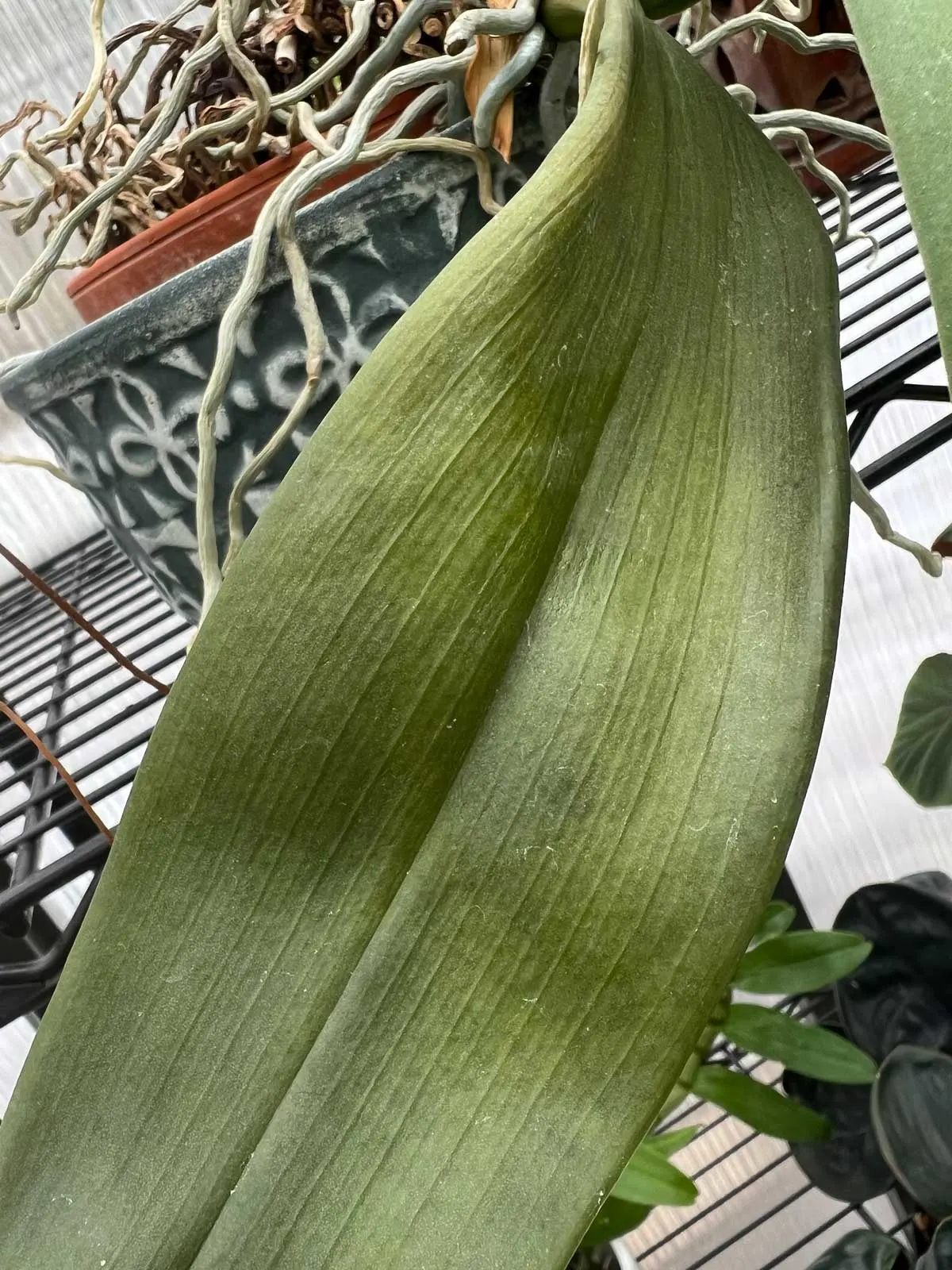
On the other hand, a healthy orchid leaf will have no pronounced ridges, and should be smooth, green and firm, like in the photo below.
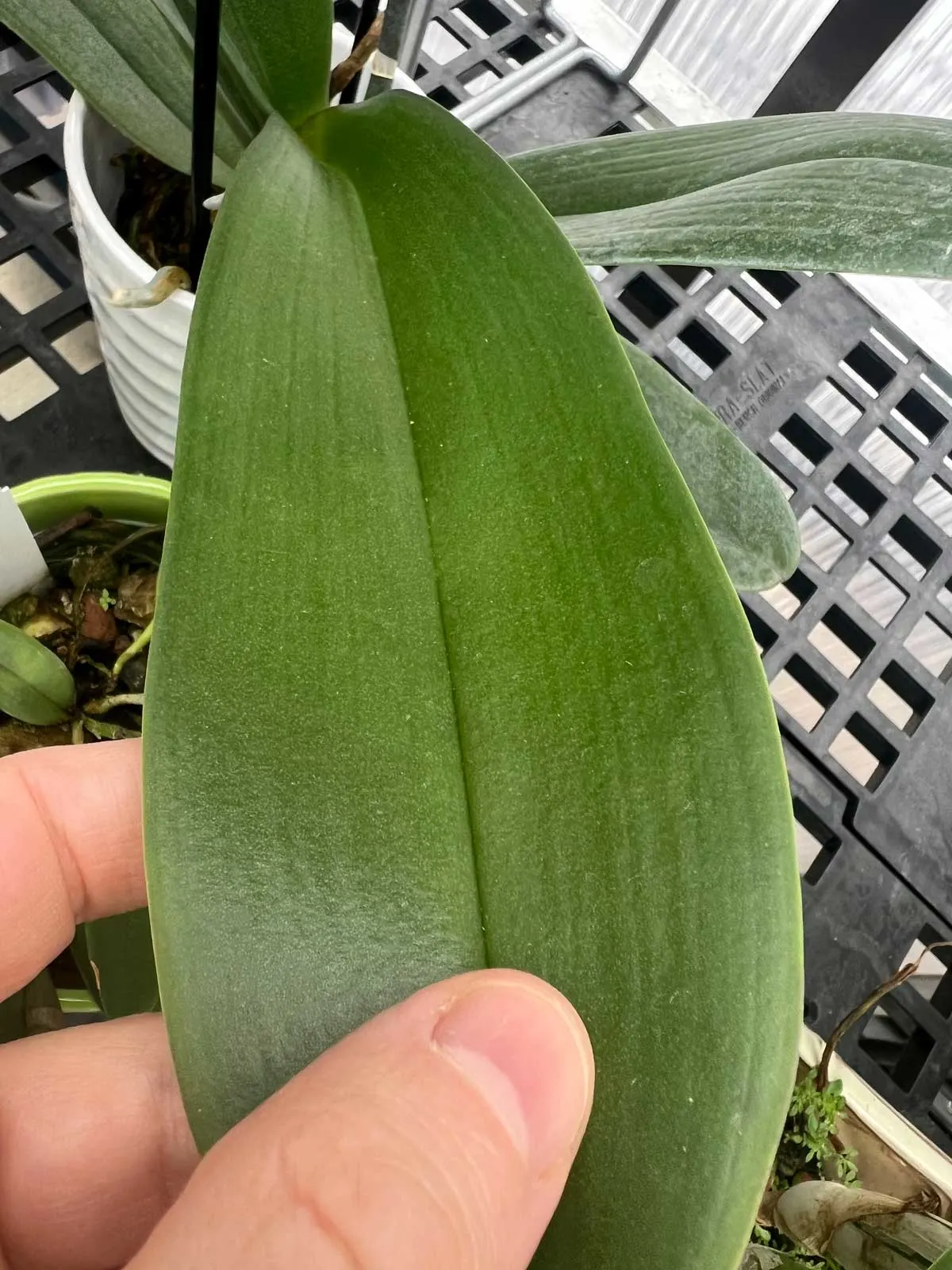
UNDERWATERING CAUSING WRINKLED ORCHID LEAVES
Phalaenopsis orchids don’t have water storage organs called pseudobulbs that many other orchids (like Cattleya have), so they are not drought tolerant at all, and they prefer to never completely dry out, particularly for long periods of time.
As a result of this, Phalaenopsis are easily prone to wrinkled orchid leaves.
If you suspect that underwatering has caused your wrinkled orchid leaves, there are some things that you can check to confirm this:
- First check the roots. Do the roots look firm, yet are shriveled and dry and wrinkled themselves? Check both the aerial roots and ones in the pot which can easily inspected if you have a clear pot, or you can slip your plant out of the pot to look.
- You can also lift the pot. Does it feel ultra-light?
- Stick your finger in the growing medium. Is it bone dry?
Perhaps you’ve even noticed all of these! Your pot type can also greatly affect how dry your medium will get. Using orchid pots with holes on the sides is fine, but it can be really challenging to keep up with if you’re growing in bark and you may find it hard to keep up with watering.
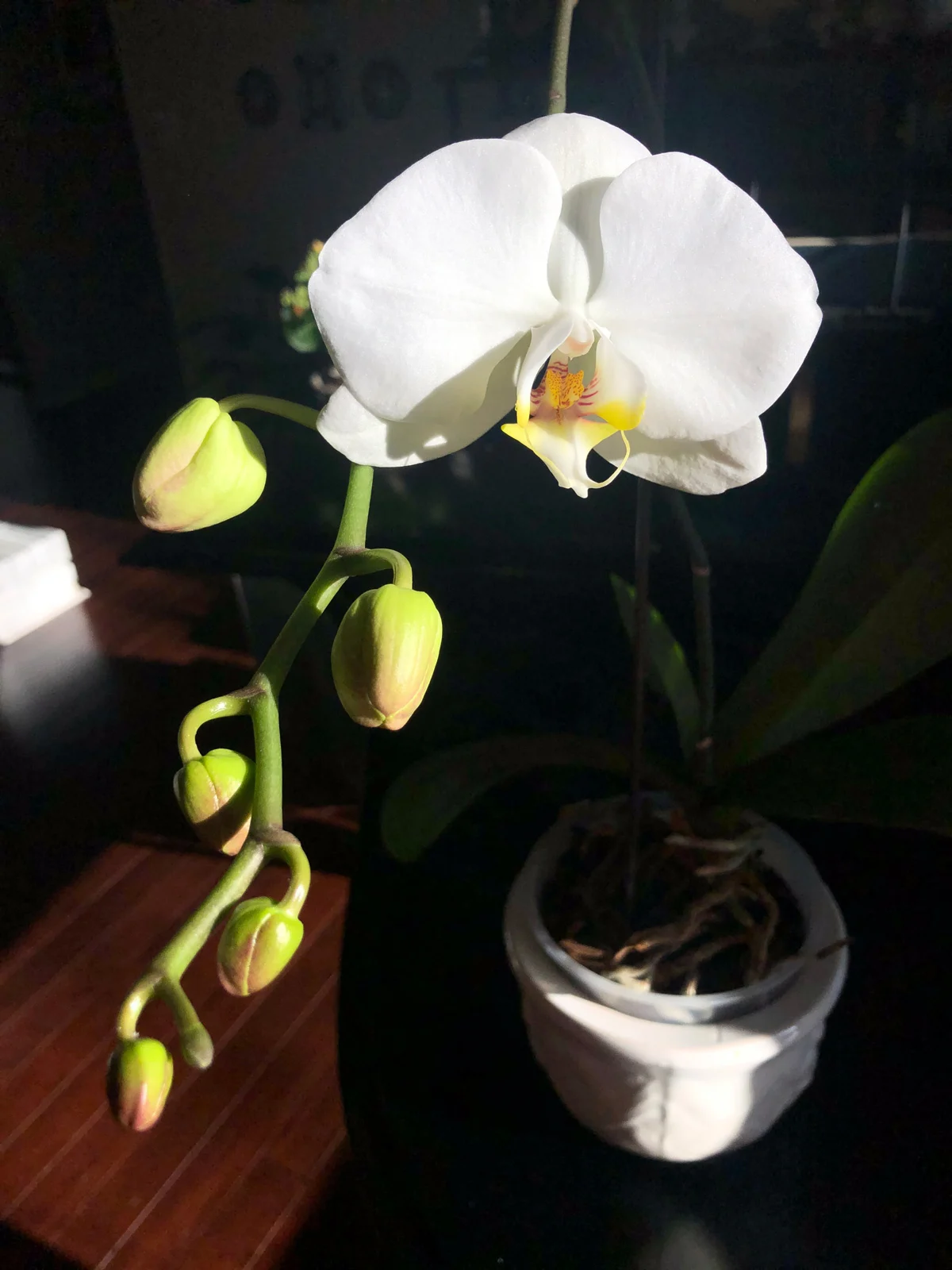
If you have determined that your orchid has been kept too dry, proceed with the following.
If you want to learn all about how to get your orchid to rebloom reliably and have healthy, thriving moth orchid plants, don’t miss my signature, online orchid care course, Become an Orchid Master. It also includes bonuses with support from me, personally, to guide you in your orchid journey!
HOW TO FIX WRINKLED ORCHID LEAVES CAUSED BY UNDERWATERING
If the wrinkled orchid leaves are yellow, they will not come back. It is best to allow that leaf to fully yellow and dry up before removing it. It doesn’t mean the plant is dead though, especially if you have other leaves that are green.
If your wrinkled orchid leaves are still fully green, you can possibly revive those wrinkled green leaves over time.
When you correct your watering, the wrinkling will not undo itself quickly. It will take consistent effort and attention to the moisture of your potting medium, whether you have it growing in an orchid bark mix or sphagnum moss.
Can wrinkled orchid leaves recover? If your leaves are still green and haven’t started to yellow, and the wrinkling hasn’t gone too far, you will probably be able to save the leaves, but even after you correct your watering, your plant may still remain slightly wrinkled and maybe even droopy, but any new growth should be strong and healthy.
If your plant is growing in a bark mix, I would use method #2 in my How to Water Orchids blog post and do this every 5 days or so until your orchid recovers, and then you can back off watering to weekly or so.
If your plant is growing in sphagnum moss, your watering frequency will be less. You can use method #2 in my How to Water Orchids blog post, but then don’t water again until the surface of the moss feels dry. If the moss goes completely dry, water immediately.
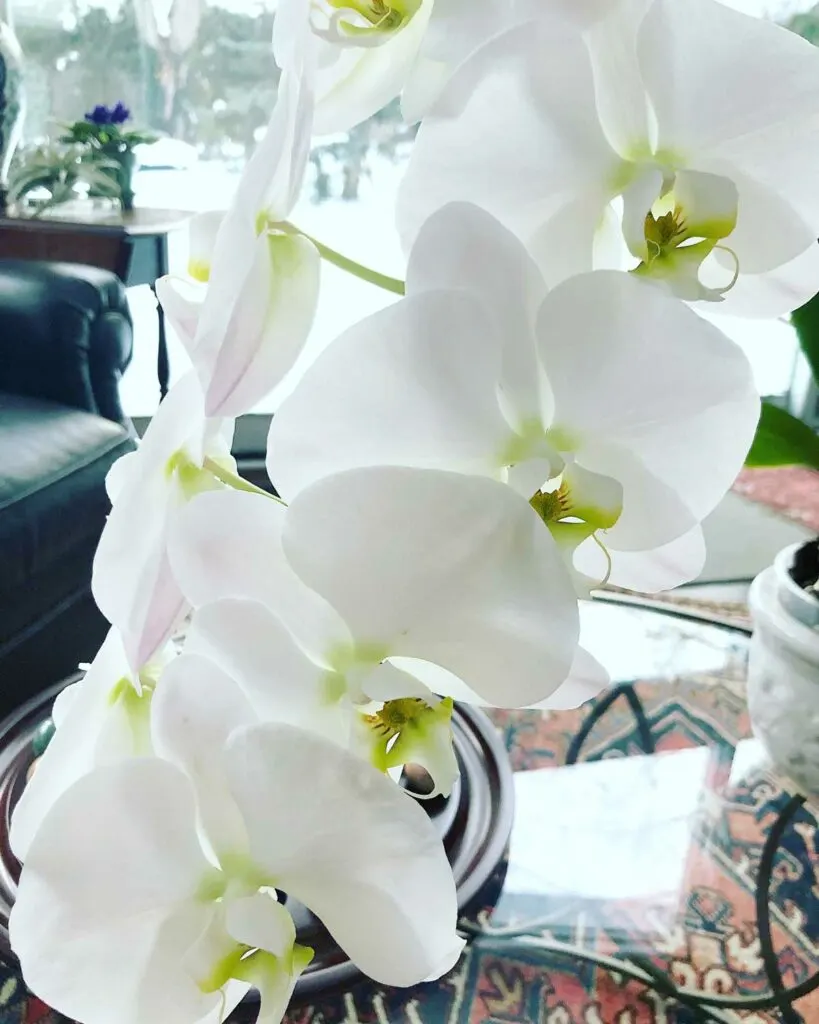
“OVERWATERING” CAUSING WRINKLED ORCHID LEAVES
This may seem counterintuitive, but if your orchid has stayed too wet for too long and it experienced root rot, your plant will become dehydrated.
If you think about it though, if the roots rotted out, your plant can no longer take in water through their roots, and thus your foliage will dehydrate and cause wrinkled orchid leaves. Makes sense now right?
So what can cause root rot in moth orchids? Moth orchids should never sit in water for any extended periods of time. Their roots are very sensitive to rotting out.
If you suspect that your orchid suffered root rot, take your orchid out of the pot, and inspect the roots. They should feel mushy, wet and even disintegrated and there may not be much of a root system left. Rotting roots will be a darker color, and you may even smell a foul odor from the roots rotting.
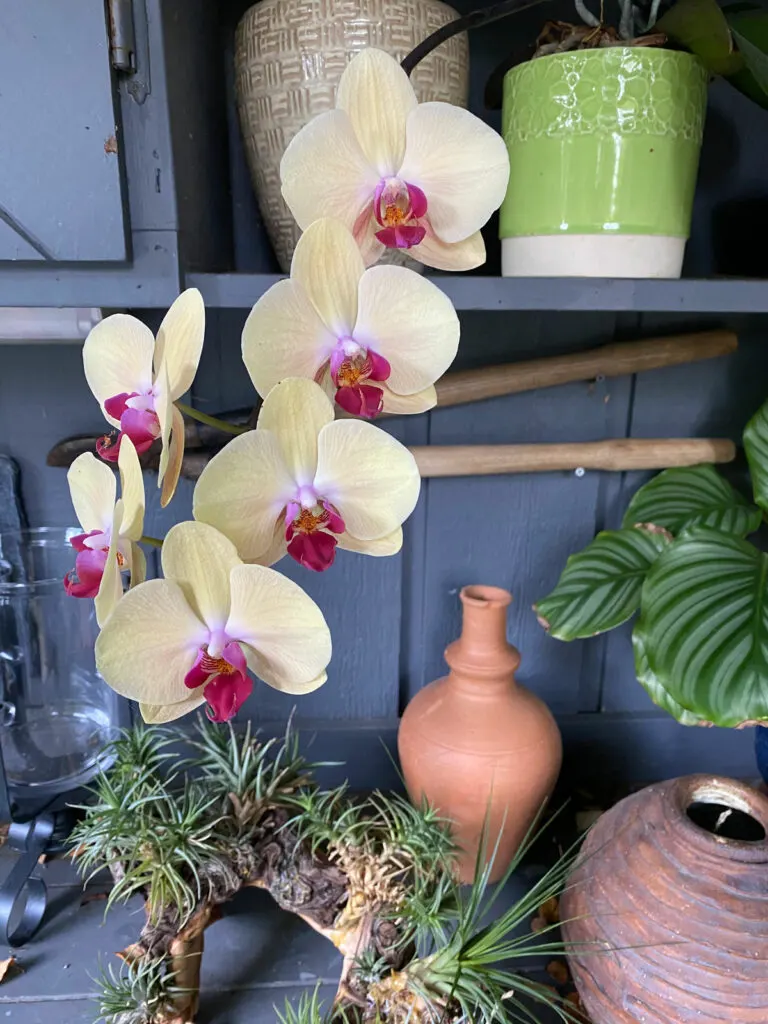
THINGS THAT CAN CAUSE ROOT ROT IN ORCHID ROOTS
- Your plant has been sitting in water (always check the saucer underneath or the decorative pot that it is sitting in). Always discard excess water and check this frequently.
- Your potting mix has broken down and suffocated the roots. Repotting orchids every couple years or so will avoid this, particularly if you are growing yours in a bark mix.
HOW TO FIX WRINKLED ORCHID LEAVES CAUSED BY “OVERWATERING”
For those of you that follow me closely, you know I hate the word “overwatering” because that word drives the wrong behavior. Instead of “overwatering”, I prefer that people say that their potting mix has stayed too wet.
(I’ve included an entire section on why “overwatering” is a terrible word in my book, Houseplant Warrior: 7 Keys to Unlocking the Mysteries of Houseplant Care.)
So if your orchid has experienced root rot, here is how to save it:
- Take your orchid out of its pot.
- Remove all the growing medium.
- Sterilize a pair of scissors with rubbing alcohol and cut off any mushy or broken roots.
- Repot in a fresh medium (orchid bark mix or sphagnum moss).
- Increase the humidity for your plant and pay special attention to proper watering of your orchid and do not let your growing medium dry out too much while your plant is recovering.
- With time, you should start to see new, healthy, white roots starting to grow.
I hope you’ve enjoyed this post on wrinkled orchid leaves and have determined what went wrong with your plant! And be sure not to miss the additional resources below in order to help you on your orchid growing journey.
RELATED RESOURCES
Why you should never water your orchids with ice
Moth Orchid Mastery: The Novice’s Guide to Mastering Moth Orchid Culture in Less Than 1 Hour eBook

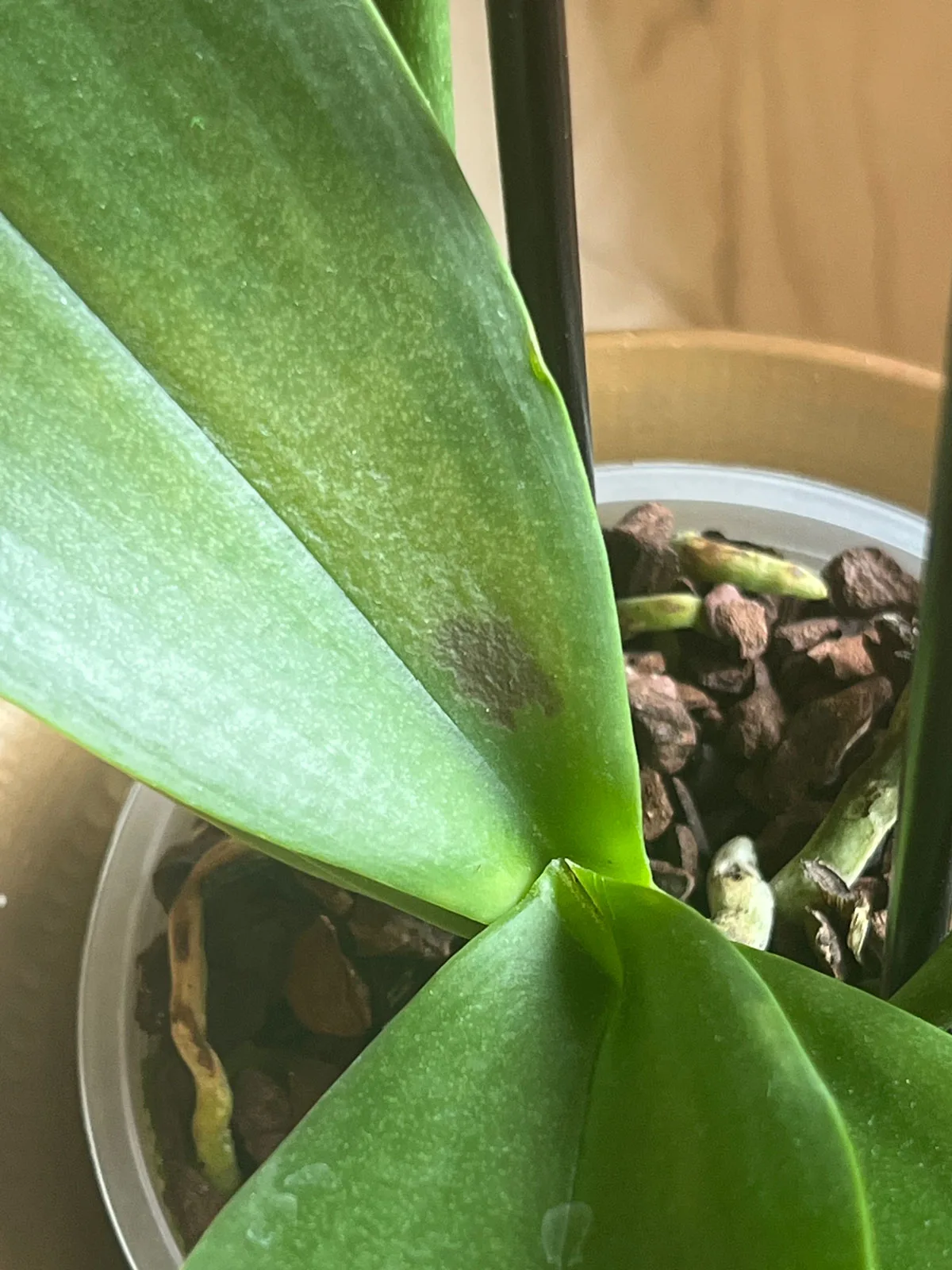
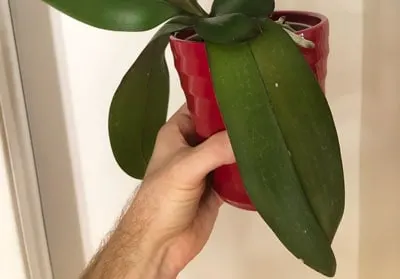
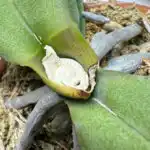
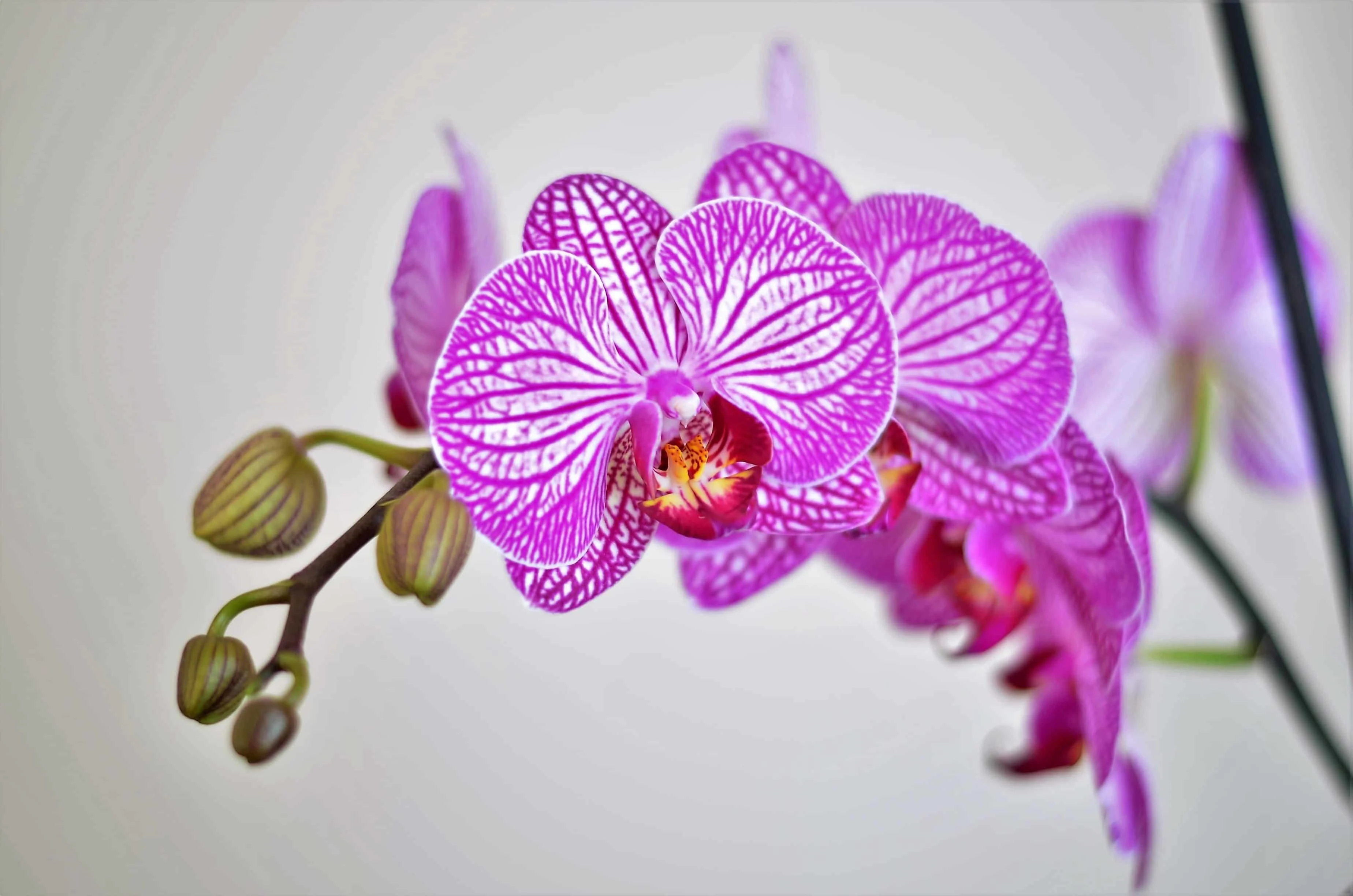

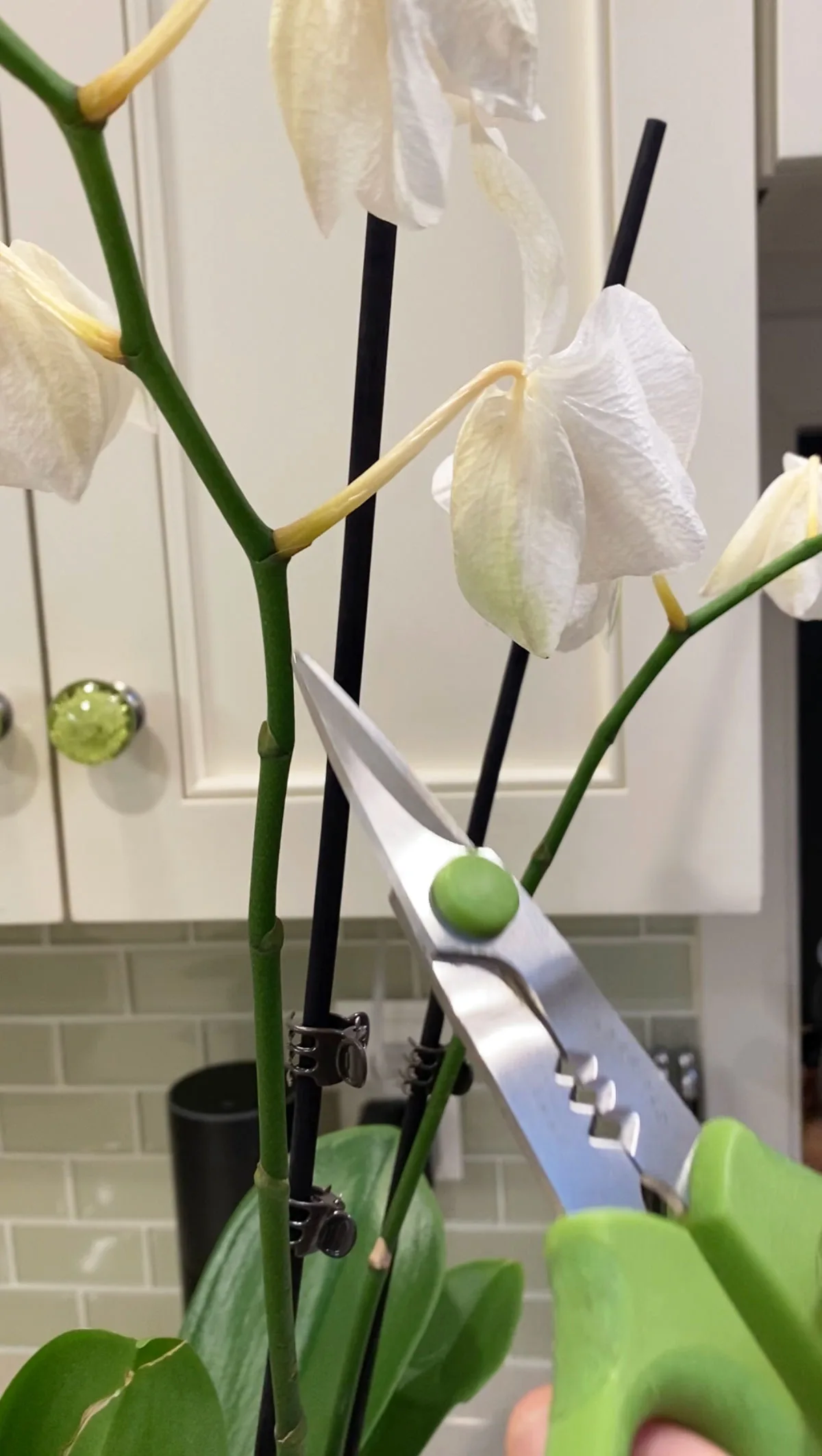
Calvin Bartechko
Sunday 2nd of March 2025
I am new to orchid growing how can I tell the difference between the flowers. I don't know what flower is what how can I tell the difference between them.
Raffaele Di Lallo
Sunday 2nd of March 2025
I'm not sure I understand your question? Are you saying that you don't know if you have an orchid flower stalk?
Nicholette
Friday 8th of March 2024
My vanilla plant is wrinkling and the leaves are turning pale and they are starting to get little brown parts. I was recommended to wrap the base in moss and stick it in soil. I guess this is wrong for where I live. What should I put it in? I live in a very dry area. What temp should I keep it at? What is "proper orchid watering" I'm a new person to vanilla and have no idea what that means or how often to water my plant. Should i put it in some kind of terrarium or put a humidifyer next it? It was so beautiful and plump when it arrived from florida. What do I do right now to fix this? Should I take it out of the soil and put it in a cup of water? idk I'm confused thank you. (My leaves are starting to look like the second picture)
Raffaele Di Lallo
Tuesday 12th of March 2024
Hi Nicholette! I actually have a vanilla blog post. Check it out here: https://www.ohiotropics.com/2023/03/29/how-to-grow-vanilla-orchid-indoors/